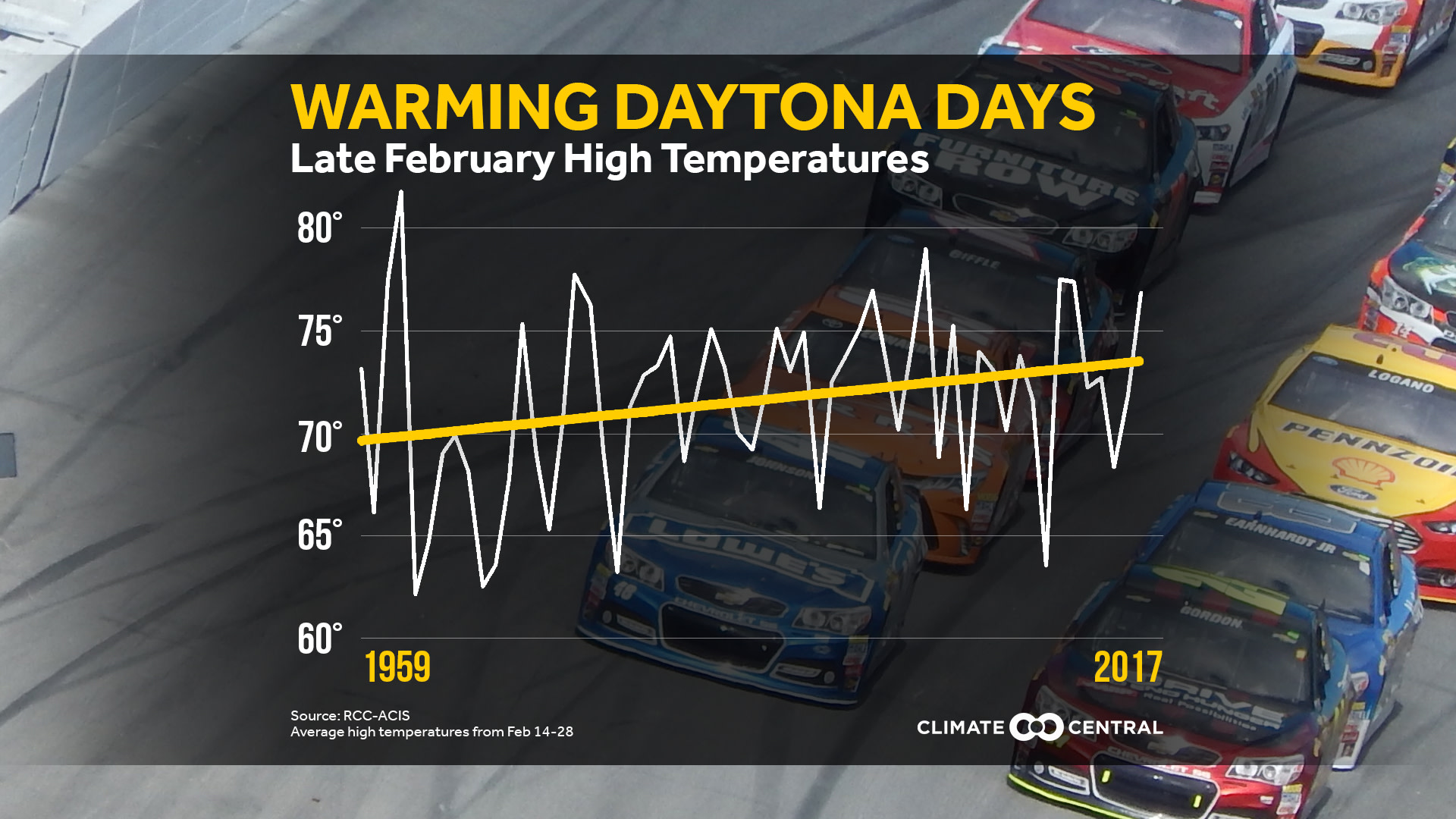This year marks the 60th running of the Daytona 500. The annual race, held in Daytona Beach during the last two weeks of February, gives people a reason to flock to the balmy Florida climate. That climate is getting even warmer — the average high temperature during the last two weeks of February in Daytona Beach has risen 3.9°F since the first race in 1959.
The temperature on any particular race day is subject to the weather pattern at the time, with the hottest race coming in 1975 when the high temperature was 85°. But of the six race days with a high temperature of at least 80°F, four have come since 2003.
As increasing levels of greenhouse gases from burning fossil fuels drive up the temperature, NASCAR members are taking steps to combat climate change with sustainability efforts. According to NASCAR Green, large solar arrays now provide power at the Pocono, Daytona, and Indianapolis tracks. In addition to installing solar panels, Sonoma Raceway houses an organic garden that supplies food for its hospitality areas. Several individual teams have added solar panels to their operations to reduce carbon emissions while recycling used oil and auto parts to keep them out of landfills. Leilani Münter, a veteran driver in the ARCA Series who has raced on tracks from Daytona to Talladega, makes sustainability the main platform of her career, advocating for solar power and development of electric cars.
While a balmy Florida climate might be enjoyable in February, the warming also serves as a reminder that the sweltering Florida summers are also getting hotter. As a health concern, the rise in extreme heat increases the risk for heat stroke and the spread of vector-borne diseases. In even hotter climates, extreme heat can buckle paved surfaces, or melt asphalt, as was seen last month in Australia.
